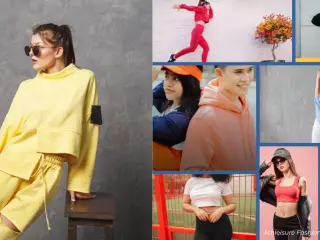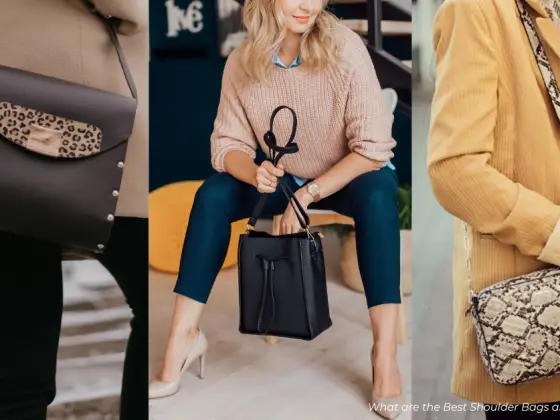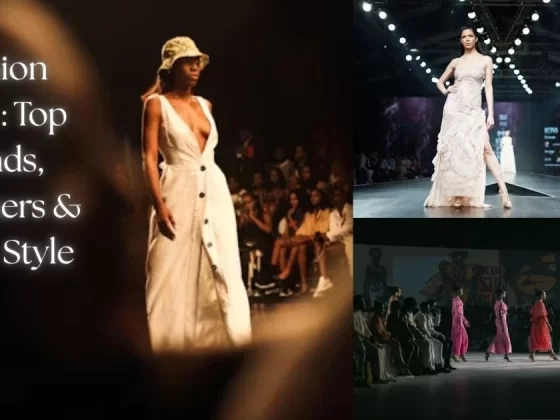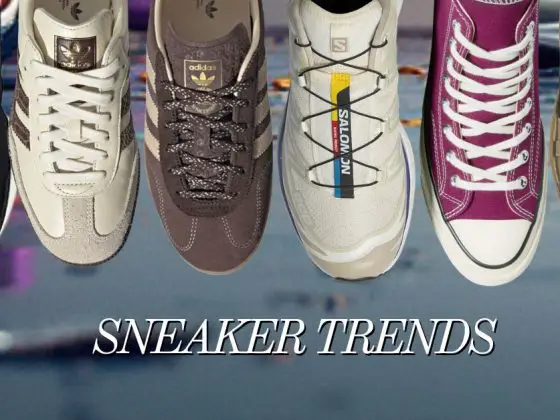 Athleisure, a hybrid of “athletic” and “leisure,” has emerged as one of the most significant shifts in fashion over the past few decades, representing a blurring of lines between activewear and everyday clothing. What started as functional sportswear designed for performance has evolved into a globally dominant fashion trend, appealing to people of all lifestyles, whether heading to the gym, running errands, or attending casual gatherings. The allure of athleisure lies in its ability to combine comfort, practicality, and style in one versatile package.
Athleisure, a hybrid of “athletic” and “leisure,” has emerged as one of the most significant shifts in fashion over the past few decades, representing a blurring of lines between activewear and everyday clothing. What started as functional sportswear designed for performance has evolved into a globally dominant fashion trend, appealing to people of all lifestyles, whether heading to the gym, running errands, or attending casual gatherings. The allure of athleisure lies in its ability to combine comfort, practicality, and style in one versatile package.
Athleisure fashion has revolutionized our approach to style, blending fitness and everyday wear into a versatile trend that’s now a staple in modern wardrobes worldwide. This shift has redefined fashion, fitness, and self-expression, making athleisure an essential component of contemporary attire.
The Rise of Athleisure Fashion
The origins of athleisure can be traced back to the late 20th century, when fitness culture began gaining mainstream popularity. The 1980s saw the rise of workout videos, aerobics classes, and an increasing focus on health and fitness as part of everyday life. Iconic brands like Nike, Reebok, and Adidas became household names, providing stylish workout attire that was functional and reflective of a growing fitness-conscious society. During this time, wearing tracksuits, sneakers, and sporty gear outside the gym became more common as people embraced a more casual and active lifestyle.
However, it wasn’t. In the early 2010s, athleisure entered the fashion mainstream. A convergence of cultural, social, and economic factors helped propel this trend to new heights. The rise of social media, the influence of celebrity endorsements, and the increasing focus on health and wellness all contributed to the growing popularity of athleisure. Wearing yoga pants, leggings, and running shoes became fashionable in contexts far removed from the gym. Celebrities and influencers were frequently spotted wearing chic activewear daily, lending an aspirational quality to the athleisure aesthetic. The demand for comfortable and fashionable clothing skyrocketed, with activewear brands like Lululemon, Athleta, and Under Armour experiencing tremendous growth.
Additionally, the growing emphasis on work-life balance, particularly among millennials and Gen Z, played a crucial role in the rise of athleisure. The boundary between work and leisure began to blur, and as remote working and flexible hours became more common, so did the demand for clothing that could transition seamlessly from the gym to the office to social activities. Athleisure’s appeal lay in its versatility and practicality—pieces that could perform well during a workout but were also stylish enough to wear throughout the day.
Key Features of Athleisure Fashion
Athleisure’s popularity can be attributed to its distinctive functionality, comfort, and style blend. These elements make it a versatile choice for various activities, whether engaging in a high-intensity workout or simply enjoying a leisurely day out. Athleisure is defined by several key features that set it apart from traditional athletic wear and casual fashion:
Functional Fabrics
One of the hallmarks of athleisure is its use of advanced, high-performance fabrics. Athleisure garments are often made from polyester, nylon, spandex, and elastane—fabrics that offer moisture-wicking, breathability, and stretch. These fabrics are designed to keep you comfortable during physical activity, but they’re equally valuable in everyday wear due to their ease of movement and durability. Additionally, many athleisure pieces are crafted with anti-microbial and odor-resistant technologies, enhancing their appeal for those who value hygiene and performance.
Relaxed Fits and Tailored Silhouettes
Athleisure clothing typically features a mix of relaxed, easy-going fits and more tailored, body-hugging designs. Popular items like leggings, joggers, track pants, and hoodies are celebrated for their comfort and flexibility. Loose-fitting silhouettes are favored for their laid-back vibe, while more fitted options like leggings and compression tops offer support and functionality. This combination of silhouettes allows for various styles, catering to fashion-forward individuals and those who prioritize comfort above all else.
Neutral Colors and Versatile Designs
Athleisure frequently incorporates neutral colors such as black, gray, white, and navy, which are easy to mix and match with other pieces in your wardrobe. These shades lend a minimalist, sleek, timeless, modern aesthetic. Athleisure also embraces bold colors, statement prints, and graphic logos, allowing for a playful and expressive twist on the otherwise subdued palette. The versatility of these designs makes it easy to transition from workout mode to a social setting without needing a wardrobe change.
Sporty Details
Many athleisure garments feature design elements inspired by traditional sportswear, such as mesh panels, zipper pockets, drawstring waists, and reflective accents. These details add to the clothing’s functionality and sporty, active aesthetic. For example, reflective accents are not just for style—they improve visibility during nighttime workouts or outdoor activities. Mesh panels provide ventilation, making them a practical choice for workouts and warmer climates.
The Impact of Athleisure
The impact of athleisure extends well beyond fashion; it has influenced how we think about clothing in broader terms, reshaping societal norms and expectations around dress codes, personal identity, and even health. Here are some of the critical ways that athleisure has made its mark:
Redefining Comfort
Athleisure has shifted the fashion industry’s focus toward comfort as a primary consideration. In the past, fashion often prioritized aesthetics over comfort, with formalwear and tailored pieces taking precedence in many professional and social settings. However, the rise of athleisure has challenged this notion by demonstrating that comfort and style are not mutually exclusive. Nowadays, more people opt for clothing that makes them feel good while looking good, prompting a reassessment of what’s considered “appropriate” or “fashionable” in different settings. Casual, comfortable styles are now accepted in places where formal wear once dominated, reflecting the changing dynamics of work, leisure, and fashion.
Promoting Active Lifestyles
Athleisure has also played a role in promoting active lifestyles. By making athletic wear more accessible and fashionable, it has encouraged individuals to integrate physical activity into their daily routines. Wearing leggings or running shoes as part of a casual outfit makes it easier to transition from work to the gym or to incorporate a workout into a busy day. Athleisure’s crossover appeal has blurred the lines between workout clothes and everyday wear, making fitness feel more approachable and less like a specialized activity. It has positively influenced public health, as more people are motivated to stay active thanks to the convenience and versatility of athleisure clothing.
Blurring Gender Lines
One of the most progressive aspects of athleisure is its role in breaking down traditional gender norms in fashion. Many athleisure garments’ oversized, relaxed fits are inherently gender-neutral, appealing to both men and women. Athleisure has created more unisex, gender-fluid fashion options, offering versatile and adaptable clothing regardless of gender. This shift reflects broader societal movements towards inclusivity, diversity, and the breaking down of rigid gender stereotypes. As more brands embrace these values, athleisure serves as a beacon of gender equality in fashion, where the focus is on the functionality and style of the garment rather than its gendered associations.
Driving Economic Growth
The widespread popularity of athleisure has also had a significant economic impact. The global activewear market has snowballed in recent years, with athleisure contributing to this surge. Brands specializing in athleisure have experienced exponential growth, expanding their product lines and reaching new markets. The trend has also encouraged collaborations between high-end fashion designers and activewear brands, blending luxury with functionality to create coveted athleisure collections. This fusion of high fashion and athletic wear has attracted a broad demographic, from fitness enthusiasts to fashion fans, further cementing athleisure as a staple in the fashion and sportswear industries.
The Future of Athleisure Fashion
As athleisure continues to lead the fashion scene, its future appears bright, with innovations and trends poised to expand the genre’s boundaries. Here are some emerging developments that will likely shape the future of athleisure:
Sustainable Materials
With sustainability becoming an increasingly important focus in the fashion industry, athleisure brands are beginning to include eco-friendly materials and ethical production practices in their designs. Organic cotton, recycled polyester, and biodegradable fabrics are becoming more common as brands seek to reduce environmental impact while still delivering high-performance, stylish garments. This push towards sustainability will likely shape the future of athleisure as consumers demand more transparency and responsibility from their favorite brands.
High-Fashion Collaborations
The fusion of luxury fashion and athleisure is a rapidly growing trend that’s here to stay. High-end fashion designers are increasingly collaborating with activewear brands to create limited-edition collections that combine the best of both worlds—high-performance functionality and high-fashion aesthetics. These collaborations elevate athleisure beyond its casual roots, introducing more sophisticated designs, premium fabrics, and innovative silhouettes that appeal to fashion-conscious consumers who still prioritize comfort.
Personalization and Customization
As consumers seek more individualized fashion options, personalized and customizable athleisure items are expected to rise in popularity. Many brands now offer bespoke designs, from monogrammed leggings to custom-fit sports bras. This trend allows customers to create unique pieces tailored to their preferences, adding an element of exclusivity to their athleisure wardrobe.
Conclusion
Athleisure has transformed fashion, blending functionality, comfort, and style. It challenges the line between activewear and casual fashion, promoting inclusivity, sustainability, and active lifestyles. As a lasting trend, athleisure remains a dominant force, shaping how we dress with its roots in athletic performance and a focus on future innovation.
















